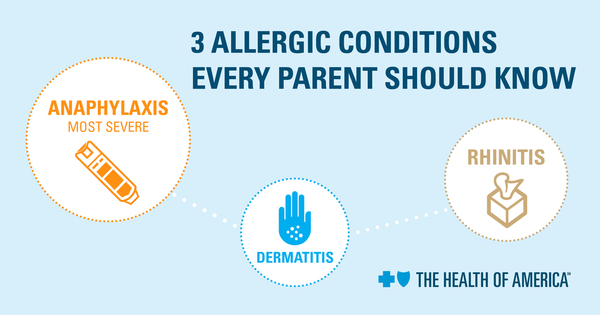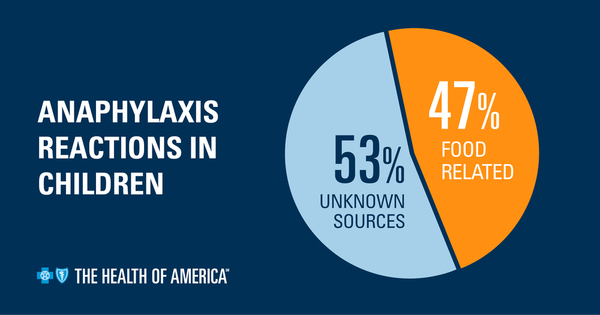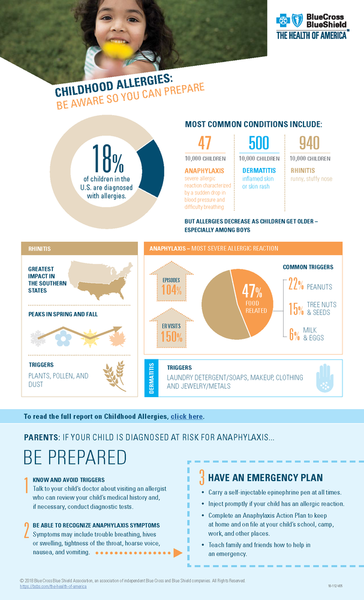The Blue Cross Blue Shield Association (BCBSA) released a report called Childhood Allergies in America. The study showed that allergy rates among children have been going up from 2010 to 2016.
The study looked at about 9.6 million U.S. with health insurance, ages 18 and younger. It found that 18 percent of these children have allergies. They looked at:

The study found that:
- The number of children “at risk” for a severe reaction increased 104 percent
- Emergency room visits due to anaphylaxis went up 150 percent
- Almost half of severe reactions were from foods
- Stuffy, runny nose and skin allergies are the two most common allergies in children
- Allergy rates drop as children get older
BCBSA sent out a press release on March 13, 2018, highlighting the report. Kenneth Mendez, president and CEO of the Asthma and Allergy Foundation of America talked about the report in the press release.
“As the rate of food allergies rises, this study highlights the increased need for awareness and education to help parents and caregivers recognize and properly treat anaphylaxis,” said Mendez. “Patients are more likely to use their medicines if cost is not an issue. Thankfully, with new generics, we again have more options for epinephrine. And with new innovative treatments on the horizon, there will be options to reduce the risk of anaphylaxis.”

BCBSA hopes the study will help parents see the need to be prepared for a severe reaction at all times. The best way to be prepared is to read labels to avoid the food your child is allergic to and carry epinephrine auto-injectors at all times.
This report is part of BCBSA’s The Health of America Report® series. Read the full report at bcbs.com/healthofamerica.

 Click for larger image
Click for larger image


Comments (2)